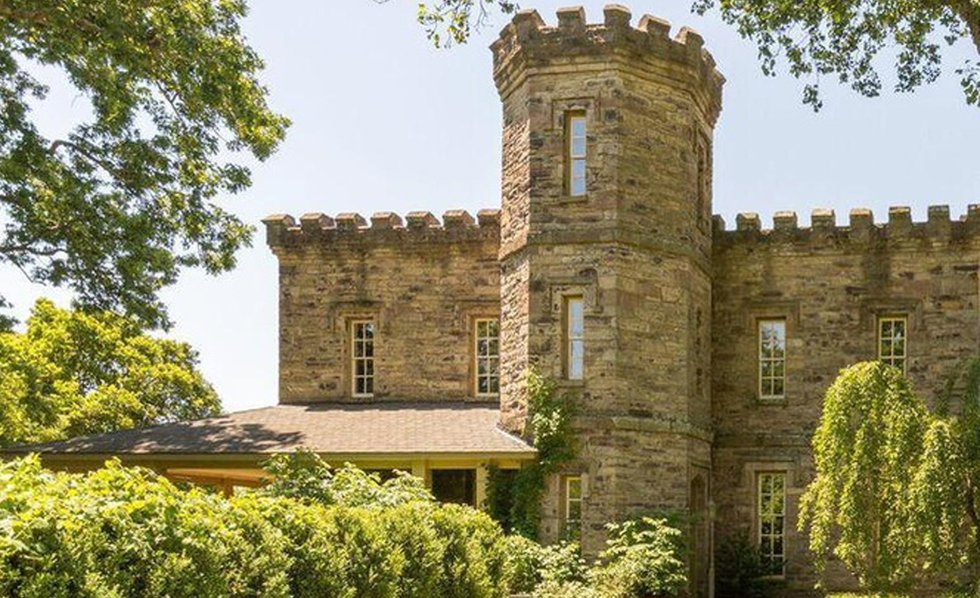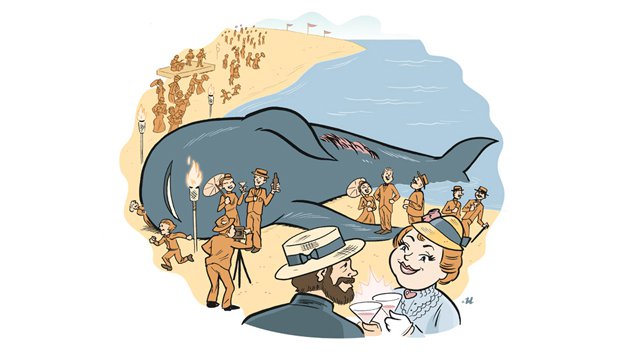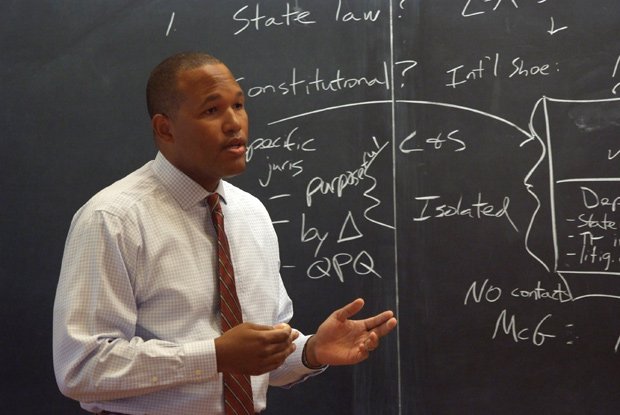After centuries of changing hands, Melrose is on the market again.

Photos courtesy of Fred Malek



Melrose doesn’t just look like a castle—it is Virginia’s most important example of 19th century castellated Gothic Revival architecture, according to the National Register of Historic Places and the Virginia Historic Landmarks Commission. And with a centuries-long chain of title, and a diverse list of interesting owners, the home has all the makings of the setting of a Gothic novel. In fact, American mystery novelist Mary Roberts Rinehart’s 1908 bestseller The Circular Staircase was inspired by the spiral staircase that winds up Melrose’s turret.
Located at 8871 Rogues Road in Warrenton and situated on 50 acres of land, the home was listed for sale last summer and is currently on offer for $2,199,000. With miles of wooded trails for hiking, three horse-ready paddocks and a six-stall barn, the grounds of Melrose seem ready for an Austenian-era romance. But the property’s history has been less than romantic.
Originally parceled in 1727, the land on which the house was later built was acquired that year by Robert “King” Carter, a wealthy colonial businessman from Lancaster County and acting governor of Virginia from 1726 to 1727, who received it as part of a manorial grant. The property was later given to Carter’s son-in-law, Mann Page, who sold the tract to Col. Armistead Churchill, a justice of the peace from Middlesex. In 1765, it was acquired by Henry Fitzhugh of Stafford County, who built the first home on the land and whose family settled there…for a little while. In 1834, the property was sold by the Fitzhughs to James H. Fitzgerald, who claimed to neighbors (and had convinced his wife) that he was the lost Dauphin of France.




Enter the Murrays, who purchased the tract in 1856 from the widowed Mrs. Fitzgerald. Dr. James H. Murray moved to Virginia from Maryland with his shipping-heiress wife Fanny Harrison Cheston, and used a fair sum of her fortune to acquire the property, which then consisted of 1,300 acres. He engaged architect George Washington Hotlzclaw of Fauquier County to build Melrose, a castellated home inspired in name and architecture by the writings of Sir Walter Scott, the Scottish novelist whose work is often credited with popularizing Gothic revival among Southern landed families of the 19th century.
The home was built from light brown fieldstone quarried from the surrounding property and completed around 1860. Then came the Civil War, and the house at Melrose was occupied almost immediately by Union troops. A liutenant in the Indiana Volunteers, who was temporarily stationed in the home, inscribed a message to the owners inside of a closet, a note from history that remained intact as late as 1983:
Dear Sir, I think you would have saved the destruction of your beautiful house by remaining at it. I am much pained to see so fine a place destroyed.
Nevertheless, the Murrays abandoned the house, returned to Maryland, and sold part and parcel to Horace L. Kent, a dry-goods merchant and Richmond city councilman (and original owner of the Kent-Valentine house, which is now headquarters for the Garden Club of Virginia).

William Weightman III and his third wife (he was already married to two other women).
After the war, Melrose served briefly as a hospital for Confederate soldiers, and for nearly 50 years, continued to change hands. In 1916, William Weightman III, polo player, racing driver, convicted polygamist and grandson of Pennsylvania chemist William Weightman, made Melrose his own. During the Weightman tenure, most of the home’s original 19th century features were lost, but it was at this time that the house was expanded to its current 9,002 square feet.
Finally, and long-overdue, in 1950 Melrose became the happy home of Herbert Bryant and his wife Margot, the daughter of Michigan senator James Couzens. The Bryants were a fixture in the community, hosting garden tours and hunts for the Casanova club. They maintained a herd of Angus cattle and raised thouroughbred horses, like Noble Quest, who won multiple French prix before being retired as a highly sought-after stud.
In the late ’80s and ’90s, Melrose was acquired from the Bryant family and attempts were made to turn it into a venue or bed and breakfast. Such efforts were blocked by Fauquier County, and eventually the property fell into disrepair until being sold at foreclosure in 2013 for $787,000. The current owners have made extensive improvements to the construction of the home and condition of the grounds, and have refinished some of the character features, like the parquet floors. The home, which is currently being listed for sale with the note “ready for final phase of renovation,” has six bedrooms, seven baths, a library, and multiple other rooms, which previously served as pantry, servants’ rooms and offices. The home has four staircases and eight fireplaces, three of which are fixed in the master suite—if you ask us, Melrose sounds like a fairy tale waiting to happen. NPS.gov/NR
Melrose is offered for $2,199,000 by Fred Malek, Spring Hill Real Estate in Vienna (703) 891-4520








